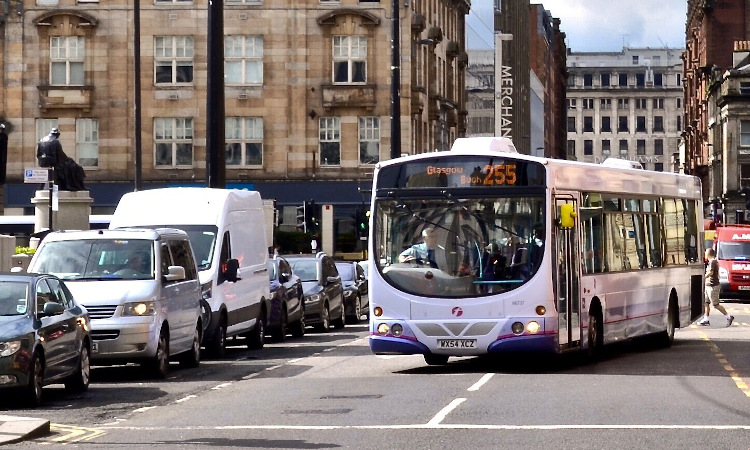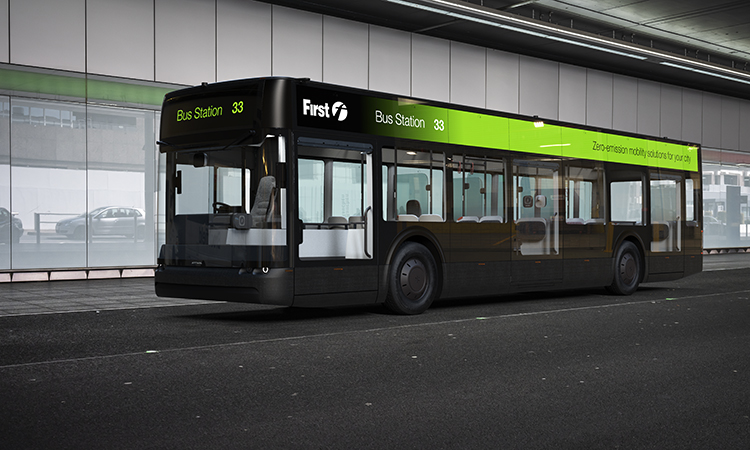The National Bus Strategy: three months in
- Like
- Digg
- Del
- Tumblr
- VKontakte
- Buffer
- Love This
- Odnoklassniki
- Meneame
- Blogger
- Amazon
- Yahoo Mail
- Gmail
- AOL
- Newsvine
- HackerNews
- Evernote
- MySpace
- Mail.ru
- Viadeo
- Line
- Comments
- Yummly
- SMS
- Viber
- Telegram
- Subscribe
- Skype
- Facebook Messenger
- Kakao
- LiveJournal
- Yammer
- Edgar
- Fintel
- Mix
- Instapaper
- Copy Link
Posted: 12 July 2021 | John Dowie - First Bus | No comments yet
June 16th marked three months since the publication of the government’s highly anticipated National Bus Strategy. John Dowie, Strategy Director at First Bus, discusses how the strategy has impacted the industry in this short time, as well as what the sector needs long-term to fulfil the strategy.


John Dowie takes a look at the progress the bus sector has made since the launch of the National Bus Strategy
With the publication of the National Bus Strategy came a £3 billion financial commitment from the Government, which is a brilliant step forward for the sector. The strategy and financial backing represent a bright and exciting opportunity to put customers first and drive the green agenda forward.
What have the first three months looked like and how is the strategy is starting to be implemented? How are First Bus’ internal strategy and actions aligned with NBS?
We were struck with how closely the longstanding asks of the bus sector and our existing strategy at First Bus aligned with the goals outlined in the National Bus Strategy . Firstly, on our ambitious climate change commitments and secondly, our laser-focus on customer satisfaction.
From a green agenda perspective, back in Spring 2020 First Bus pledged that we would only invest in low and zero-emission vehicles from December 2022, with the aim of achieving a 100 per cent zero-emission fleet by 2035. Work to deliver on this timescale is already well underway, most recently with the announcement of a further 126 electric buses for Glasgow, supported by the latest round of Scottish Ultra Low Emission Bus (SULEB) funding. This brings the number of new electric buses planned for Glasgow to 150, all of which will operate from our Caledonia depot which is currently undergoing a transformation to become the UK’s largest electric vehicle (EV) depot.
Earlier this year we also announced a new partnership with Arrival, the British start-up creating electric vehicles with radical new technologies. As part of this, we’ll be testing three of their single-deck electric buses across some of our existing routes to better understand their technology in real world operating conditions.
Hydrogen buses have also been a significant investment for us – our fleet of 15 in Aberdeen has recently reached a milestone – they have completed 100,000 miles of combined journeys. Since launching in January, they have saved 17,0000kg of CO2, which is equivalent to taking 42 cars off the road for a year – something we’re really proud of. It’s great news for the residents of Aberdeen, as it means their air is cleaner, and it is also a great example of how bus companies can and will have a significant impact.
The central aim of the National Bus Strategy is to get more people travelling by bus. It goes without saying that to get more people to travel by bus, bus operators must offer services that are reasonably priced and convenient for passengers. As an organisation we are putting our customers’ needs and expectations front and centre. For example, Smart Ticketing, which the National Bus Strategy references, has remained a core focus for us at First Bus and during the pandemic we’ve accelerated the introduction of more smart ticketing options across our fleets in response to our customers’ changing travel patterns.
We have also accelerated investment in payment technology, both with our best-in-class app and the enhanced functionality available via Ticketer. This has led to recognition across the industry, including the recent receipt of an award for Travel App of the Year. We have also introduced more Tap and Cap schemes and enabled Apple Pay ‘Express Mode’ payments via our on-board ticket machines – all to make things more convenient for our customers.
What will the sector need for a long-term focus on bus priority (and increased bus patronage) in England?
The National Bus Strategy provides direction, and a long-term vision for the future of buses. It isn’t, however, a delivery plan. For the sector to implement the government’s vision, we’ll need a roadmap that marks out timelines and responsibilities for all stakeholders. Timescales are tight; the Bus Service Improvement Plans have to be finished by end October 2021 and the Enhanced Partnerships in place by April 2022. It is important that haste doesn’t become the enemy of the good. We need well considered plans, which make the best use of the funding available. We need our local authority partners to take the necessary hard decisions on how best to allocate road space.


Arrival’s electric bus features lighter components to save weight Credit Arrival/First Bus
For now, we will continue to invest in what we do have control of – developing our fleet in line with our net zero commitments, training our people to deliver the best service, digital innovation that improves customer experience, and providing reassurance and building trust with our customers post-pandemic. A focus for First Bus and the rest of the industry, is how we can both retain customers and entice people who aren’t regular bus users to consider bus travel.
Customer confidence has been highlighted ten-fold by the implications of Covid-19, with safety concerns a core part of people’s journey considerations. We will continuously work to ensure that our passengers feel comfortable on board and to show our commitment to them. We’re looking forward to working with the sector and government on the forthcoming national ‘Back to Bus’ campaign, to accelerate passenger recovery and re-establish confidence in the UK bus network.
Ultimately, customers need to see value in taking the bus and the ways in which it’s superior to other options. So, how do we show potential customers that buses are a sustainable, convenient and economical way to travel?
In our experience, collaboration is key. When national government, local authority, and the private sector work together with a joint vision, great strides can be made. Collaboration is the only way we can encourage customers back to bus (or indeed to bus for the first time). We need our local authority partners to deliver better performing local road networks, with enhanced priority for bus. The National Bus Strategy states “To benefit from the funding in this strategy, LTAs in such places will be expected to implement ambitious bus priority schemes and draw up ambitious Bus Service Improvement Plans,” and we wholeheartedly agree that this is the way forward. Working as partners, we can put these plans in place in a manner that works for both local authorities and our customers.
We have learned a lot from successful partnerships with local authorities. Our collaboration with Leeds City Council and West Yorkshire Combined Authority led to the introduction of 274 new buses, improved passenger information and bus punctuality, and around £200 million of public sector investment was put toward making bus a priority in the region. We are keen to replicate this success in the other areas, and work with partners to create a responsive and functional bus network. Our plans are much aligned to the National Bus Strategy ’ Enhanced Partnerships plan, which champions closer stakeholder relationships.
It’s incredibly encouraging that the government is making bus a priority, and we’re excited to progress and implement our own climate and customer commitments in line with the National Bus Strategy .
Biography
John Dowie is Strategy Director at First Bus.
Related topics
Alternative Power, Fleet Management & Maintenance, Passenger Experience, Public Transport, Sustainable Urban Transport, Transport Governance & Policy
Related modes
Bus & Coach
Related cities
UK
Related organisations
First Bus








